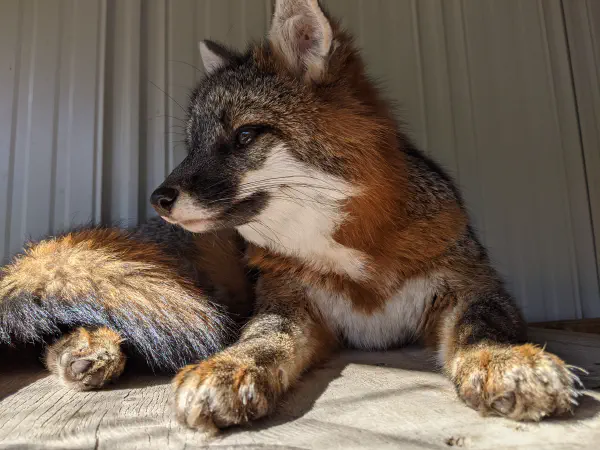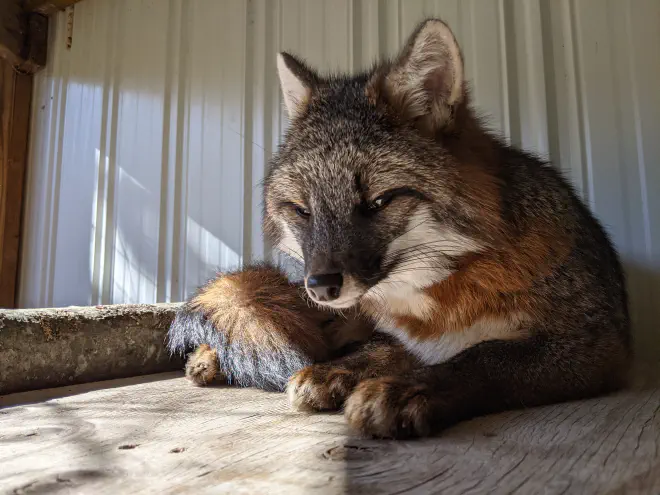Urocyon cinereoargenteus
Table of Contents

Scientific Classification
| Kingdom: Animalia |
| Phylum: Chordata |
| Class: Mammalia |
| Order: Carnivora |
| Family: Canidae |
| Genus: Urocyon |
| Species: Urocyon cinereoargenteus |
Conservation Status
Identifying Features
To identify from other candids, gray foxes have black stripes down their back and a black tipped tail. Their fur is usually gray and brown. They have pointed ears, and angled snouts, typically with long claws on their pads. Unlike all other vulpes species of fox, they have circular pupils.
Habitat & Range
Widespread in North America and Central America and they are the only species of fox that covers this range. Mostly found in woody, bushy and rocky regions.
Behavior
They are particularly adept at climbing trees with their sharply hooked claws. They are mainly crepuscular, being active during dawn and dusk. They den in hollow logs, thickets or in appropriated dens. Very rarely do they den in trees. They are generally solitary animals unless breeding or caring for offspring.
Life Cycle
They are assumed to be monogamous and their breeding season widely varies but typically in the late winter to early spring. Gestation lasts for approximately 53 days and each litter is typically 1-7 kits. Kits will begin hunting with their mother at 3 months of age. Typically the lifespan in the wild is 6 years.

Featured image of Banshee, a gray fox ambassador at the Cayuga Nature Center. Photo by Katie Bagnall-Newman.
See Me At Cayuga Nature Center
